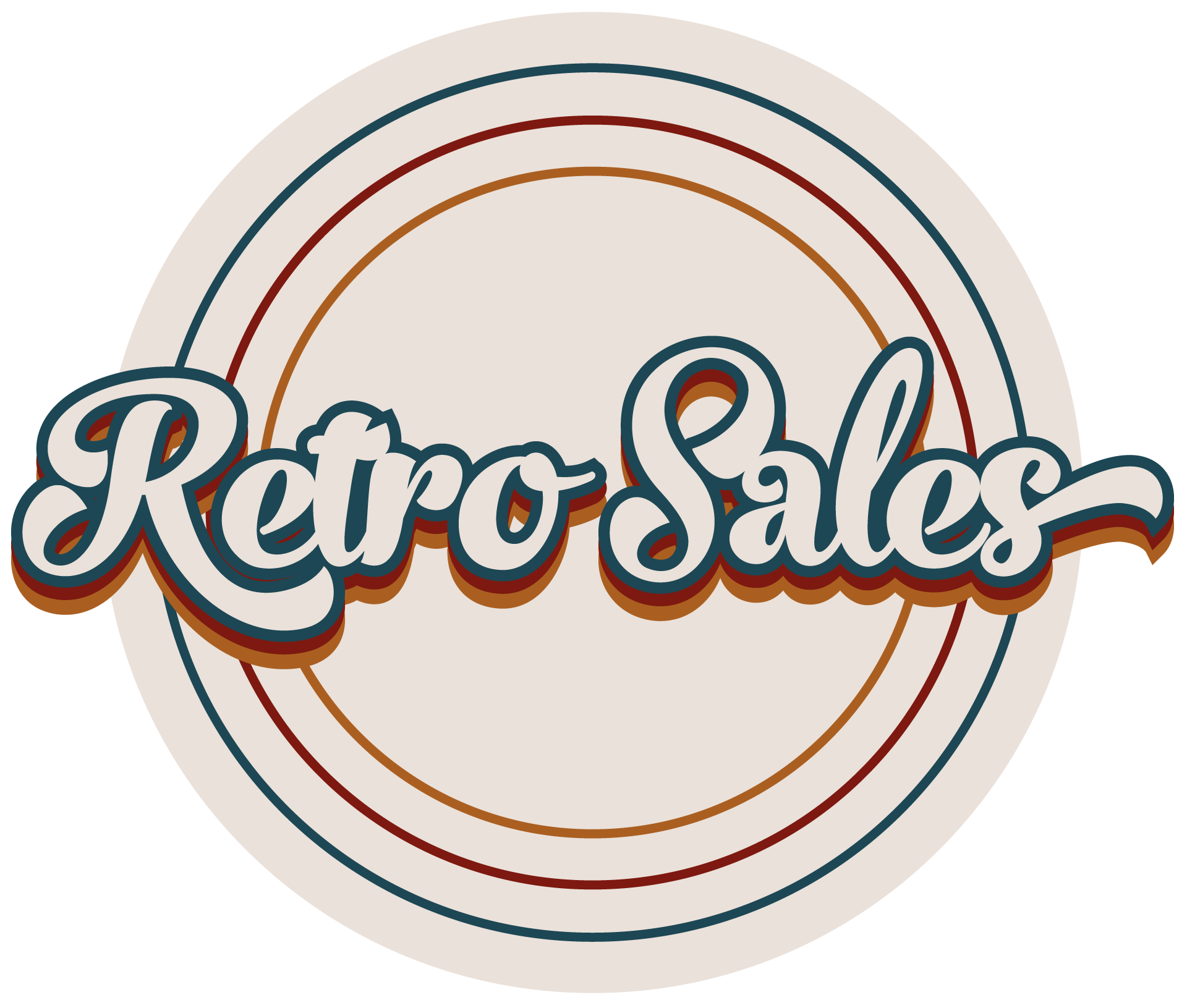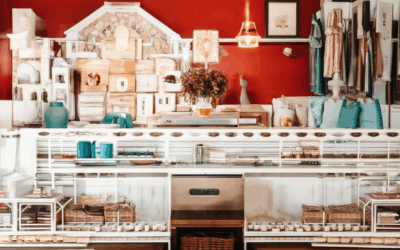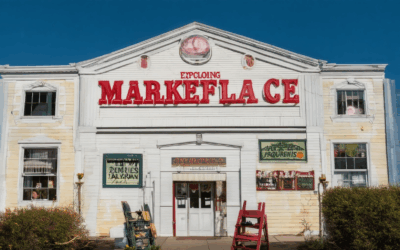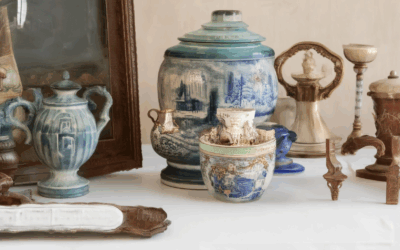Are you passionate about retro collectibles? Whether you’re just beginning your retro collecting journey or looking to expand your horizons, a retro collector’s blog can be your ultimate platform to share your passion, discover rare pieces, and connect with like-minded enthusiasts. From learning how to start a blog that resonates with your audience to unearthing hidden gems in flea markets and online auctions, this guide offers actionable tips to help you grow your collection while building a vibrant online community. With insights on leveraging platforms like eBay and Etsy, plus expert advice on curating content that keeps your audience engaged, this article is your go-to resource for mastering the art of retro collecting and blogging. Let’s dive in and ignite your retro collection journey!
Key Takeaways
– Leverage Unique Finds: Focus on rare or overlooked retro items to captivate readers and stand out in the market.
– Consistency Drives Engagement: Regularly update your blog to keep your audience invested and showcase new collection additions.
– Build Relationships: Engage with your readers through comments and social media to foster loyalty and community.
– Collaborate for Growth: Partner with fellow collectors or bloggers to expand your network and attract new followers.
– Optimize for SEO: Use relevant keywords and detailed descriptions to boost your blog’s search engine visibility.
– Monetize Thoughtfully: Explore affiliate marketing and sponsored content aligned with your retro theme.
– Stay Inspired Continuously: Follow trends and explore different eras to keep your content fresh and relevant.
– Track and Adapt: Analyze your blog’s performance to refine your strategy and maximize engagement.

Starting a Retro Collector’s Blog and Finding Rare Pieces
To embark on your journey of starting a retro collector’s blog and discovering rare pieces, follow these organized steps:
- Choose Your Niche
- Decide whether you want to focus on a specific era, such as vintage fashion, old technology, or pop culture memorabilia.
- Pick a theme that aligns with your passion and target audience preferences.
- Use a user-friendly CMS like WordPress for its flexibility and SEO-friendliness.
- Select a responsive theme that complements your retro aesthetic, such as themes featuring vintage typography or analog designs.
- Install necessary plugins for SEO, analytics, and content management.
- Write engaging posts about your finds, including historical background and personal stories.
- Curate high-quality images and organize them into themed galleries or portfolios.
- Include a section for your collection, showcasing each piece with details and photos.
- Research keywords related to retro collecting using tools like Google Keyword Planner.
- Craft SEO-friendly titles and meta descriptions incorporating relevant keywords without keyword stuffing.
- Internal link your content strategically to enhance SEO performance and guide visitors to explore your site.
- Explore online marketplaces like Etsy, eBay, and specialized vintage platforms for rare items.
- Check local flea markets, antique stores, and estate sales for hidden treasures.
- Join online communities and forums, such as Facebook groups or Reddit threads, to network with fellow collectors who may share leads.
- Respond to comments and participate in discussions to foster a loyal community around your blog.
- Collaborate with other retro bloggers or influencers to cross-promote content and reach a broader audience.
- Explore affiliate marketing opportunities with partner sites offering retro products or services.
- Sell selected items from your collection on platforms like eBay or Etsy, ensuring you manage inventory effectively.
- Keep abreast of retro trends and cultural movements by following influencers and reading related blogs.
- Share your blog posts on social media platforms like Instagram, Pinterest, and Twitter to increase visibility.
- Use SEO tools to monitor your blog’s performance and adjust strategies based on analytics.
By following these steps, you can successfully launch a retro collector’s blog, curate rare finds, and engage with a passionate community. Remember to maintain authenticity and continuously refine your approach based on feedback and performance data.
How to Grow Your Retro Collection Effectively
Building and expanding a retro collection can be an exciting and rewarding endeavor. Here are some proven strategies to help you grow your collection effectively:
- 1. Attend Swap Meets and Fairs
- 2. Leverage Online Marketplaces
- 3. Build Relationships with Sellers
- 4. Preserve and Protect Your Finds
- 5. Stay Informed About Trends
- 6. Network with Like-Minded Collectors
- 7. Explore Local Vintage Stores
- 8. Consider Investing in Key Pieces
- 9. Share and Showcase Your Collection
- 10. Stay Consistent and Patient
Swap meets and flea markets are great places to find rare and unique retro items. Events like the Brimfield Flea Market or the Rosemont Auction Center are popular destinations for retro collectors. These events often feature vendors selling vintage goods that you won’t find elsewhere.
Platforms like Retro Sales offer a curated selection of vintage items and collectibles. They also provide valuable resources through their blog, which can help you stay informed about trends and tips for building your collection. Explore their shop and blog sections for inspiration and rare finds.
Connecting with sellers and collectors who share your passion can open up opportunities you wouldn’t otherwise find. Attend local meetups or join online communities to network with others who love retro culture. This can lead to exclusive deals and access to items that aren’t widely available.
When you find something special, make sure to care for it properly. Use archival-quality storage solutions to keep your items safe. Consider getting insurance to protect your collection from loss or damage. Proper preservation ensures your pieces remain in great condition for future enjoyment.
Keep an eye on what’s popular in the retro scene. Platforms like Retro Sales’ blog provide updates on emerging trends and events. Understanding what’s in demand can help you make smarter purchasing decisions and even flip items for profit if you’re looking for a side hustle.
Join forums, groups, and social media pages dedicated to retro collecting. Engaging with others can provide valuable insights, tips, and even leads to new items. Collaboration with fellow collectors can also lead to trades or shared opportunities that benefit everyone involved.
Visit local vintage shops and boutiques to discover hidden gems. Many stores carry unique items that you won’t find online. Use apps like Etsy or eBay to search for local sellers who may have items listed for sale.
Some retro items, like certain records, toys, or fashion pieces, can significantly increase in value over time. Invest in high-quality, rare items that align with your interests. Research auction houses or specialty dealers to find pieces that fit your collection goals.
Documenting your collection and sharing it with others can help you connect with fellow enthusiasts. Create a portfolio on social media or a blog to showcase your finds. This also helps establish you as a knowledgeable collector and can attract new connections and opportunities.
Growing a retro collection takes time and dedication. Don’t get discouraged by slow growth. Consistently seeking out new items and building relationships will pay off in the long run. Remember, it’s about passion and patience.
By following these tips, you can build a thriving retro collection that reflects your unique style and interests. Happy hunting!
Explore Retro Sales

How a Retro Collector Can Use Their Blog to Showcase Their Collection and Connect with Enthusiasts
Transforming your blog into a hub for your retro collection can be a powerful way to share your passion and connect with like-minded enthusiasts. Here’s a step-by-step guide to effectively showcasing your collection and building a community around it:
- Showcase Your Collection with High-Quality Photos
- Take detailed photos of your rare and unique retro items, ensuring good lighting and clear backgrounds.
- Organize your photos by category, such as vintage clothing, electronics, or home decor, to make it easier for readers to navigate.
- Use descriptive captions that highlight the history or significance of each item, adding context and interest to your posts.
- Share Stories and Insights About Your Finds
- Write engaging narratives about how you discovered your pieces, any interesting stories behind them, or how they fit into your collection.
- Incorporate tips on sourcing retro items, such as where to find hidden gems or how to negotiate deals with sellers.
- Post videos or time-lapse recordings of your restoration process, giving viewers a behind-the-scenes look at your work.
- Engage with Retro Communities
- Ask questions or organize challenges in your blog posts to encourage interaction, such as “What’s the Rarest Item You Own?”
- Respond to comments and messages thoughtfully to build trust and foster a sense of community.
- Join or moderate retro enthusiast forums, groups, or social media pages to connect with others who share your interests.
- Optimize for Search Engines
- Use relevant keywords and hashtags like “#RetroCollector,” “#VintageItems,” and “#CollectibleCulture” to increase visibility.
- Regularly update your blog with fresh content to keep your site active and searchable.
- Link to other retro-related content, such as articles or videos, to attract more visitors and establish your blog as a go-to resource.
- Collaborate with Other Collectors
- Feature guest posts from other retro enthusiasts to broaden your audience and gain insights from different perspectives.
- Host virtual meetups or Q&A sessions via your blog to connect with collectors worldwide.
- Share resources like directories of retro shops, restoration services, or event listings to support your community.
- Stay Consistent and Authentic
- Keep your tone personal and genuine to build a loyal audience that feels connected to your journey.
- Experiment with different content formats, such as videos, podcasts, or interactive polls, to cater to various learning styles.
- Be patient and persistent, as building a community takes time and effort.
By leveraging your blog as a platform, you can not only showcase your retro collection but also build lasting connections with fellow enthusiasts. Whether you’re sharing your passion for vintage items or collaborating with others, your blog becomes a central space for your retro journey.

What Are the Best Strategies for Growing a Retro Collection While Running a Successful Blog?
To grow your retro collection while maintaining a successful blog, focus on the following strategies:
- Leverage Unique Angles : Retro Sales thrives on unique finds, so emphasize rare or overlooked items in your posts. Share personal anecdotes or behind-the-scenes stories to connect with readers on a deeper level.
- Consistency is Key : Regular updates keep your audience engaged. Establish a routine, whether weekly or bi-weekly, to showcase new additions to your collection and share insights from your journey.
- Engage with Your Audience : Respond to comments and messages thoughtfully. Building relationships with your readers fosters loyalty and encourages them to participate in your retro adventures.
- Collaborate with Fellow Collectors : Partner with other retro enthusiasts or Retro Sales to swap items or gain tips. Guest blogging or featuring others’ collections can expand your network and attract new followers.
- Optimize for SEO : Use relevant keywords and hashtags to increase visibility. Include detailed descriptions of your finds and share how you discovered them, which can improve your blog’s search engine ranking.
- Monetize Strategically : Explore affiliate marketing or sponsored content opportunities that align with your retro theme. Promote products or services that complement your collection and earn a commission.
- Stay Inspired : Follow retro trends and explore different eras to keep your content fresh. Engage with communities on platforms like Instagram or Pinterest to discover new ideas and inspiration.
- Track Growth : Analyze your blog’s performance using tools like Google Analytics. Understand what resonates with your audience and adjust your strategy accordingly to maximize engagement and growth.
By combining these strategies, you can successfully grow your retro collection while building a thriving blog community around it. Remember, passion and dedication are key to achieving your goals.
Starting a Retro Collector’s Blog: A Step-by-Step Guide
Ready to embark on your journey as a retro collector and share your passion with the world? Starting a blog is a fantastic way to document your finds, connect with fellow enthusiasts, and showcase your expertise. Here’s how to get started and uncover rare pieces along the way.
Define Your Niche
Your blog’s success hinges on having a clear focus. Whether you specialize in vintage fashion, tech gadgets, or home decor, narrowing your scope helps attract a dedicated audience. For instance:
- Vintage fashion bloggers might focus on designer clothes from the 70s and 80s.
- Technology enthusiasts could highlight classic computers and gadgets from the analog era.
- Home decor enthusiasts might focus on mid-century modern furniture and accessories.
Set Clear Goals
Before diving in, ask yourself what you aim to achieve. Are you looking to document your collection, share restoration tips, or promote your finds? Clarity on your objectives will guide your content strategy and help you stay motivated. Some goals to consider:
- Documenting rare finds and sharing their stories.
- Providing restoration and maintenance tips for vintage items.
- Connecting with other collectors and fostering a community.
Optimize for SEO
To maximize visibility, ensure your blog is search-engine friendly. Start with a catchy domain name like RetroSales.org that reflects your niche. Regularly update your blog with high-quality content featuring keywords like “retro collector’s blog” and “vintage finds.” Here’s how to get started:
- Use descriptive titles for each post, incorporating relevant keywords.
- Write detailed descriptions for your rare pieces, including historical context.
- Regularly publish fresh content to keep your audience engaged.
Build a Community
Engage with your readers to foster a loyal community. Respond to comments, join forums, and participate in social media groups dedicated to retro collecting. Platforms like Instagram, Pinterest, and Facebook are great for showcasing your finds and connecting with others. Don’t forget to share behind-the-scenes content to humanize your brand and build trust.
Find Rare Pieces
Uncovering rare pieces requires patience, persistence, and a network of trusted sources. Here are some strategies to help you succeed:
- Online Marketplaces: Explore platforms like Etsy, eBay, and Poshmark to discover hidden gems. Use filters to target specific eras and materials.
- Local Flea Markets and Antique Shows: Attend events to spot rare items before they’re listed online. Talk to vendors and ask about the history of their pieces.
- Facebook Groups: Join communities focused on retro collecting to learn about upcoming sales and shares recent finds.
- Networking: Build relationships with other collectors who may share leads or opportunities to purchase rare items.
Preserve and Document Your Finds
Once you’ve found a rare piece, take steps to preserve its condition and document its history. High-quality photos, detailed descriptions, and video walkthroughs can enhance your blog posts and attract more readers. Sharing the story behind each find adds emotional value and keeps your audience engaged.
Stay Consistent and Evolve
Blogging isn’t a one-time effort—it’s a long-term commitment. Stay consistent with your updates, experiment with new content formats, and adapt to changes in the retro collecting scene. Tracking your progress and learning from feedback will help you grow and improve over time.
By following these steps, you’ll not only build a successful retro collector’s blog but also uncover rare pieces that tell fascinating stories. Share your journey, inspire others, and enjoy the thrill of connecting with a passionate community. Happy blogging—and happy hunting!

Best Strategies for Starting and Growing a Retro Collector’s Blog
Starting a retro collector’s blog is an exciting venture that combines passion with creativity. To grow your collection and audience effectively, follow these proven strategies:
1. Choose the Right Platform
Select a reliable blogging platform like WordPress or Blogger to get started. These platforms offer user-friendly tools for creating content and customizing your blog’s design.
2. Pick a Catchy Domain Name
Braeburn your domain name that reflects your retro theme. Consider incorporating words like “vintage,” “retro,” or “nostalgia” to make it memorable and relevant to your audience.
3. Define Your Niche
Specialize in a specific area of retro collecting, such as vintage gadgets, memorabilia, or fashion. This helps attract a dedicated audience and positions your blog as an authority in the niche.
Explore platforms like Retro Sales to discover trending items and gain inspiration for your posts.
4. Develop a Content Strategy
Post high-quality images and detailed descriptions of your retro finds. Share personal stories, restoration tips, and historical insights to captivate readers.
Engage your audience by asking them to share their own collections or favorite pieces in the comments section.
5. Optimize for SEO
Use keywords like “retro collector’s blog” and “vintage gadget reviews” to improve your search engine ranking. Optimize your titles, meta descriptions, and tags accordingly.
Regularly update your content with fresh topics and ensure your images are optimized for web use with proper alt texts.
6. Leverage Social Media
Share your blog posts on Instagram, Pinterest, and Facebook to reach a wider audience. Use hashtags like #retrocollectors and #vintagefinds to connect with like-minded individuals.
Engage with your followers by responding to comments and participating in retro-related forums or groups.
7. Build an Email List
Offer a free downloadable guide or e-book in exchange for email sign-ups. Send regular newsletters with updates, exclusive content, and tips for retro collectors.
8. Collaborate with Other Bloggers
Partner with other retro bloggers or influencers to promote each other’s content. Guest blogging and joint giveaways can help grow your audience and credibility.
9. Explore Monetization Opportunities
Once your blog gains traction, consider monetization strategies like affiliate marketing, sponsored posts, and selling your own retro-themed merchandise.
10. Stay Updated on Trends
Keep an eye on retro trends and cultural movements by following influential figures and attending local retro events. This will inspire fresh content ideas and keep your blog relevant.
11. Collect Feedback and Iterate
Ask your readers for feedback on your content and what they’d like to see more of. Use this information to refine your strategy and improve your blog’s performance.
12. Maintain Consistency
Consistently publish high-quality content to keep your audience engaged. Create a content calendar to plan your posts in advance and stick to it.
By following these strategies, you’ll not only grow your retro collection but also build a thriving online community around your passion.




0 Comments